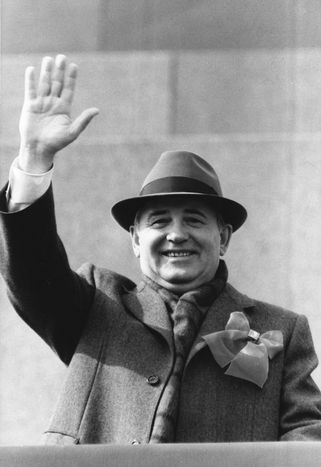
Perestroïka: pictures in Paris (15 images)
Published on
Translation by:
Annie Rutherford‘The media unanimously commemorated the 20th anniversary of the fall of the Berlin wall but nobody has spoken about the 20 years since the end of the USSR.’ That’s why Jean-Robert Raviot, the curator of the USSR: endgame exhibition, chose to exhibit the period of perestroika or 'restructuring', a political movement in communist-era Russia between 1985-1991. It runs at the museum of contemporary history from 2 December to 26 February 2012
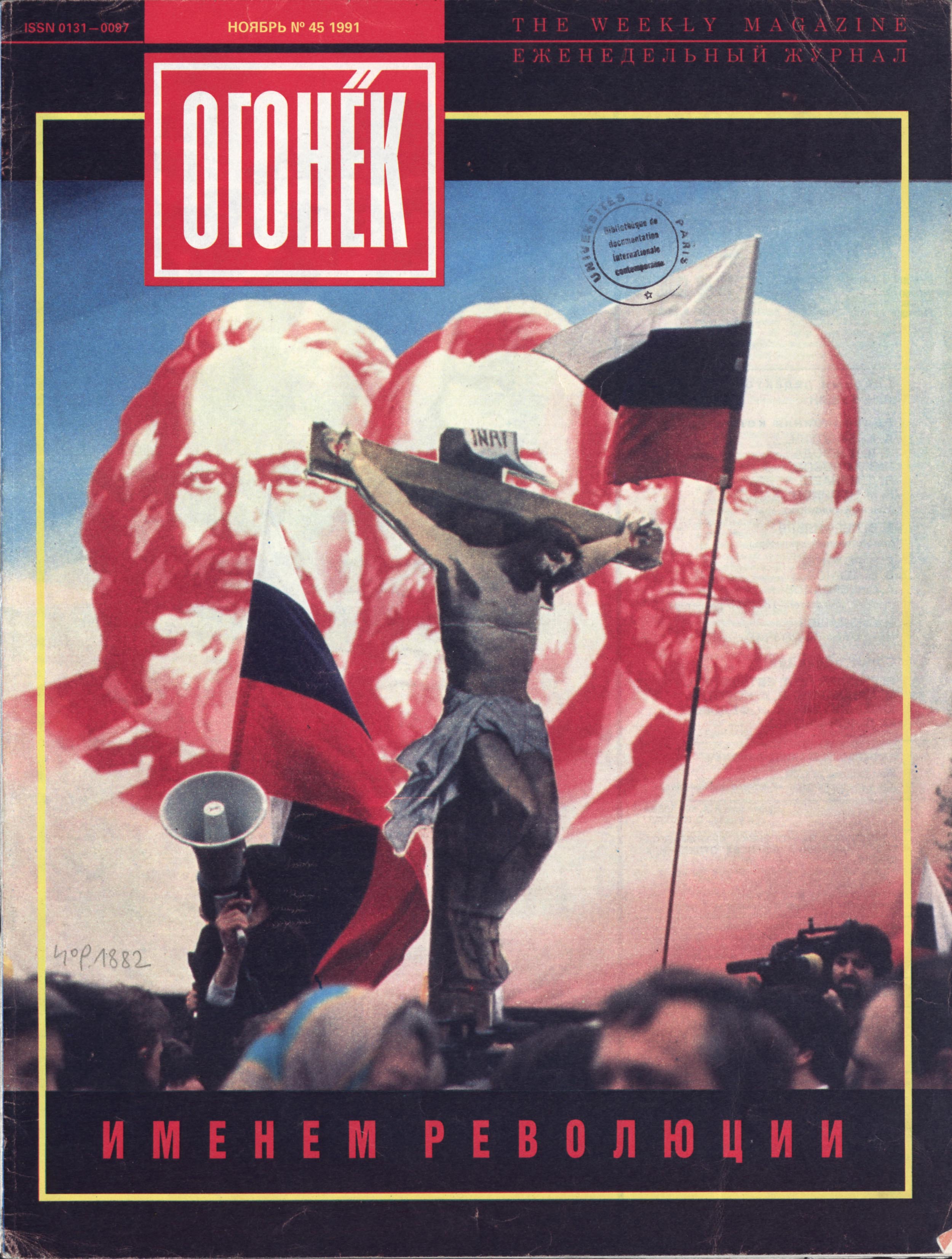
The exhibition has three angles: the unofficial press, political posters and photography. This original approach puts the emphasis on the perspective towards the events, letting us see things through the perception of the soviets themselves. Pictured, the cover of the weekly magazine Ogoniok (meaning ‘the little flame). The first illustrated journal about the history of Russia, this image symbolises the critical tone adopted by the press during perestroika. The title ‘In The Name Of The Revolution’ from a November 1991 edition represent an uninhibited journalism, freed from the tutelage of power (All images from the Paris exhibition come from the French international contemporary documentation library (BDIC), the museum of political history of Russia in St. Petersburg, the Russian state library and the Russian memorial association; this image is from the BDIC and D.R collection)
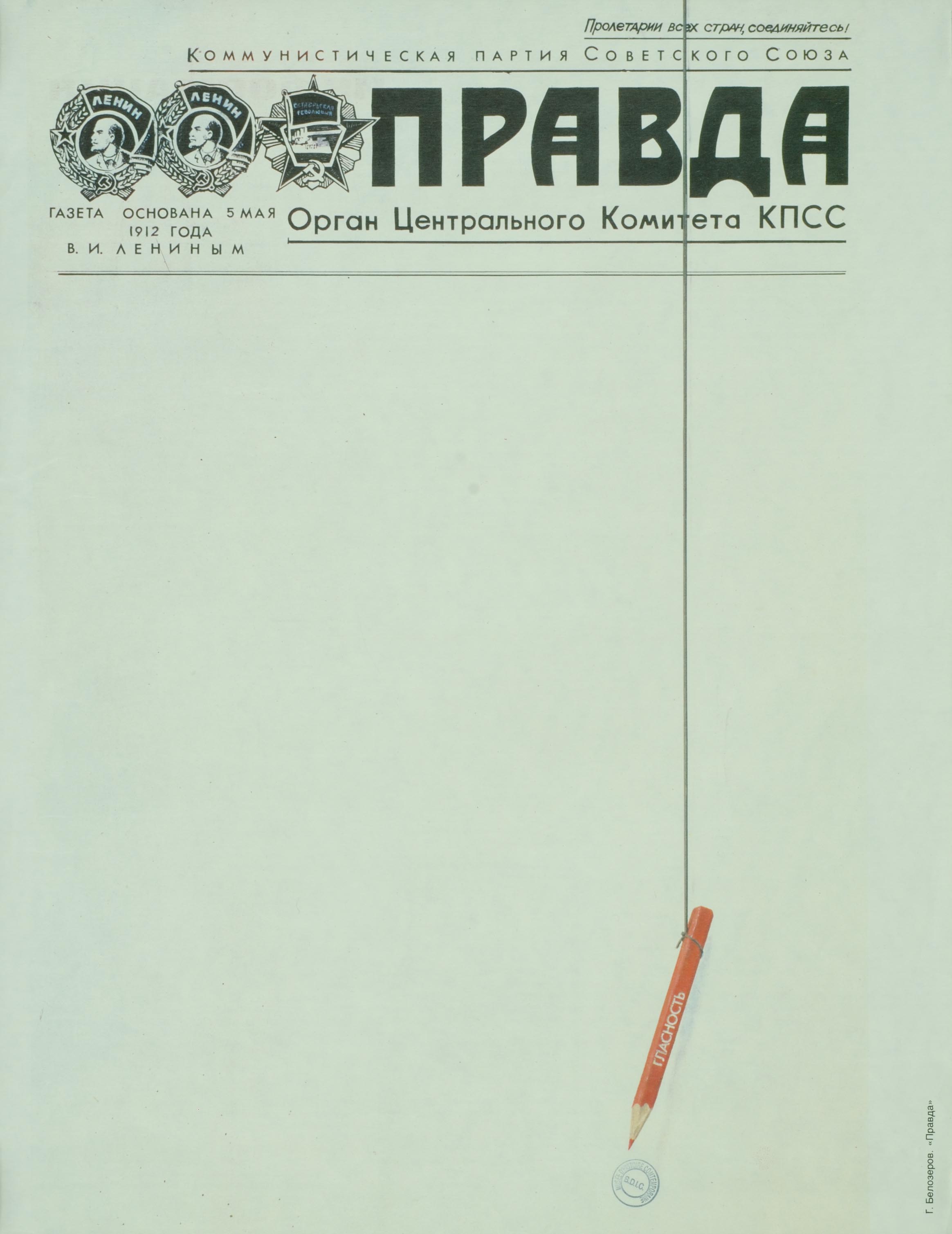
G. Belozerov’s 1988 poster uses a term generally translated as 'transparency' but which literally means ‘openness’ in the sense of open debate. Under the header of the officially approved newspaper Pravda ('Truth') we see the pencil ‘glasnost’ (Collection BDIC, image: © G. Belozerov)
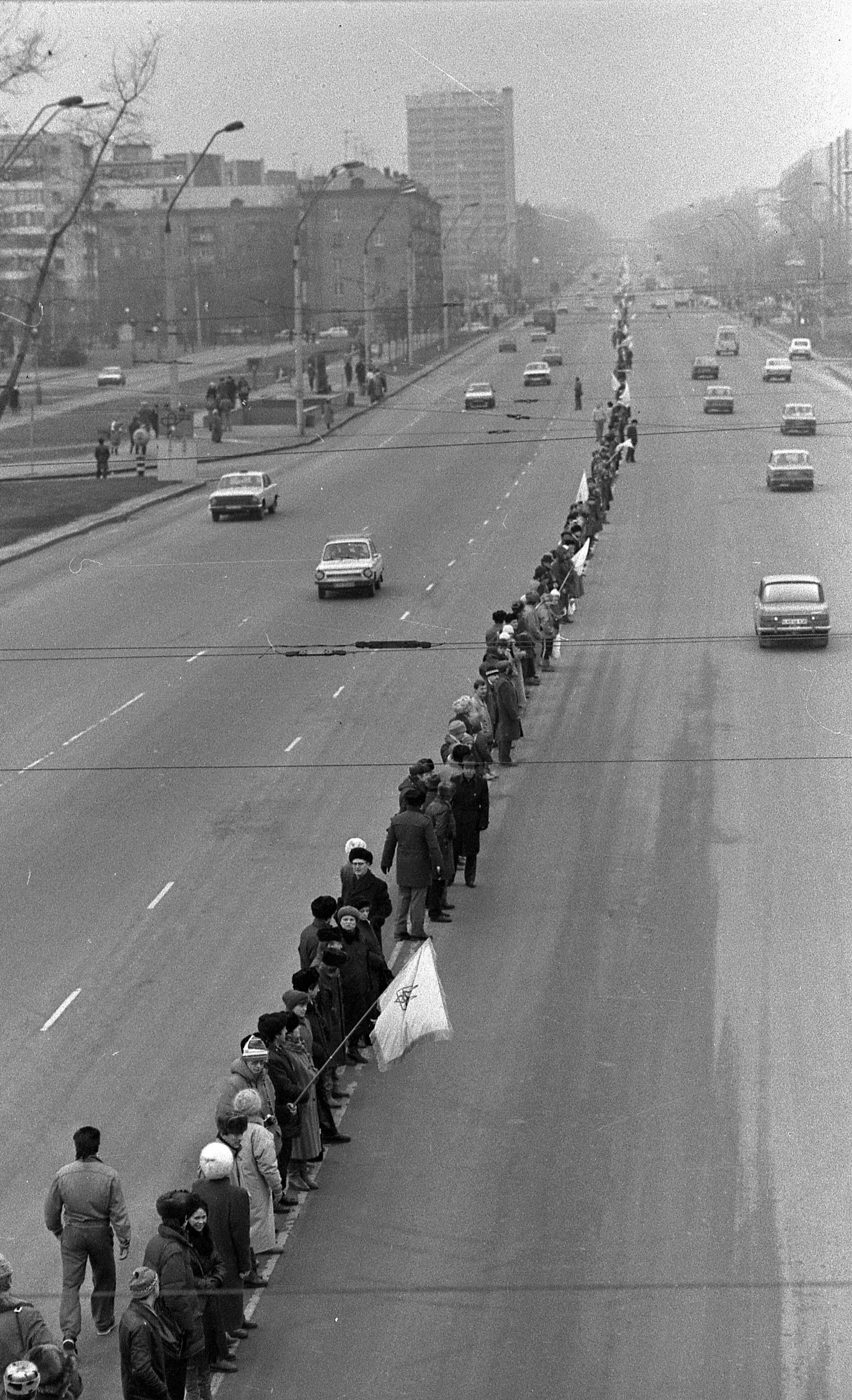
A human chain from Kiev to Lviv in western Ukraine in memory of the unification of Ukraine as an independent republic in 1919 (Image: © Ukrinform)

‘Farewell censorship?’ The cover of Ogoniok in December 1989 illustrates a period of relaxation during which censorship relaxes before being officially banned on 12 June 1990 (Collection: BDIC, image © D.R.)
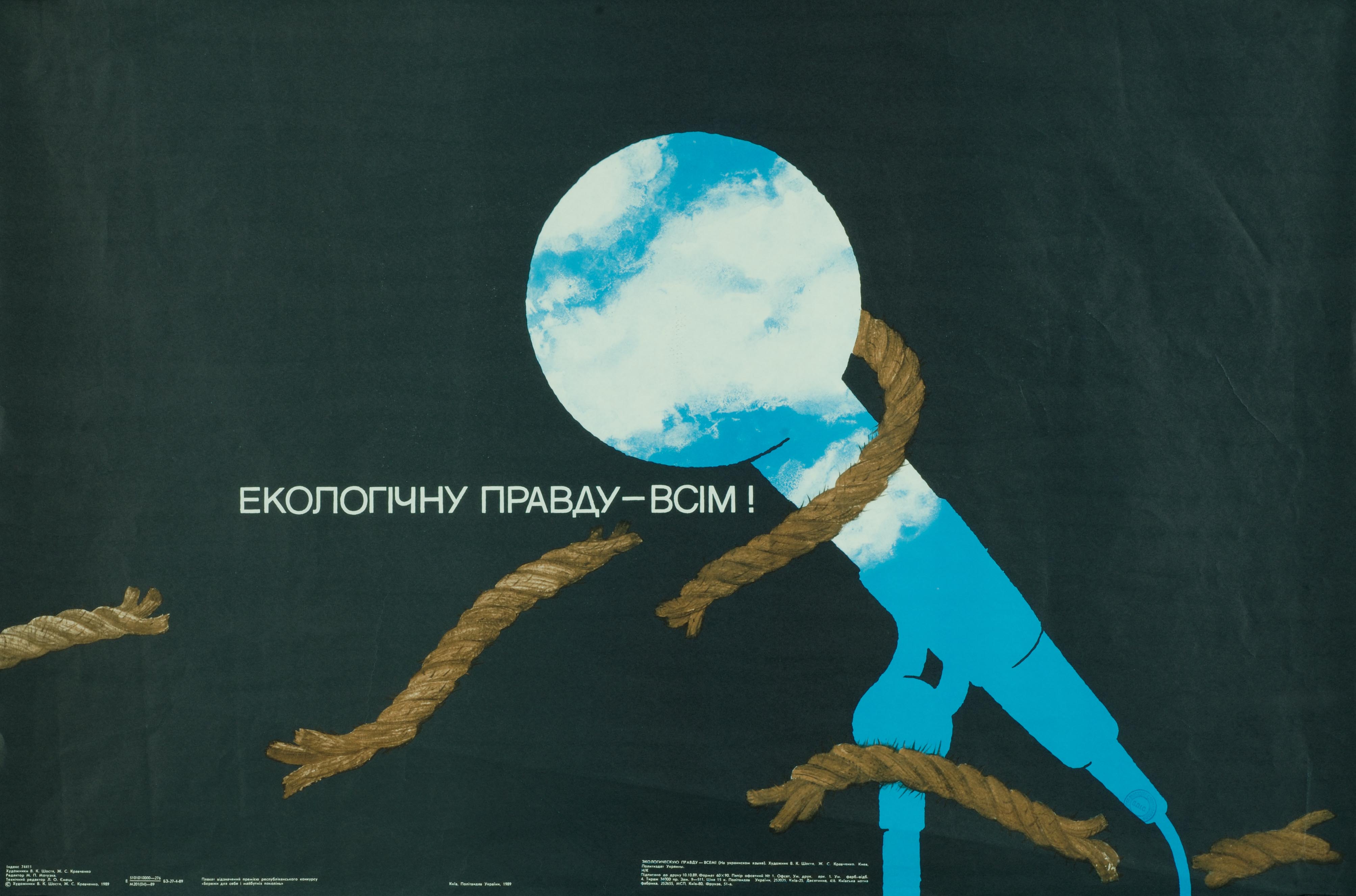
‘The truth about the ecology for everyone!’ announces the Ukrainian poster by V Chostia and Z. Kravtechenko. With glasnost, speech became considerably freer. This profoundly transformed the public space. Graphic designers who had been muzzled were now able to express their opinions (Image: © V. Chostia )
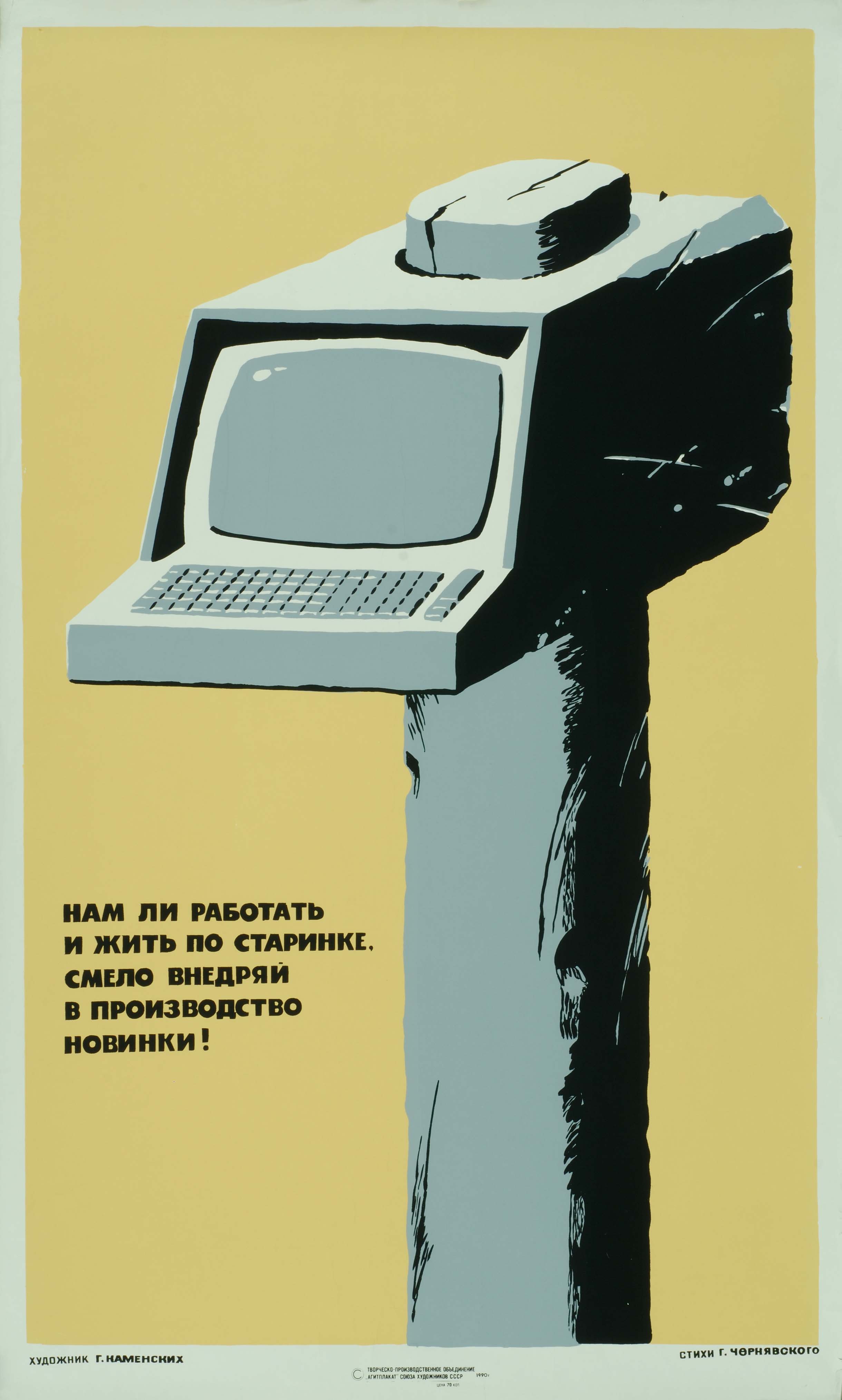
‘Do we have to live and work the old way? Have the courage to be innovative!’ In 1990 micro informatics played a part in the small revolutions of everyday life. Here, a micro-computer replaces the hammer, symbol of the soviet industry (Image: © G. Kamenskikh, G. Tcherniavskiï)
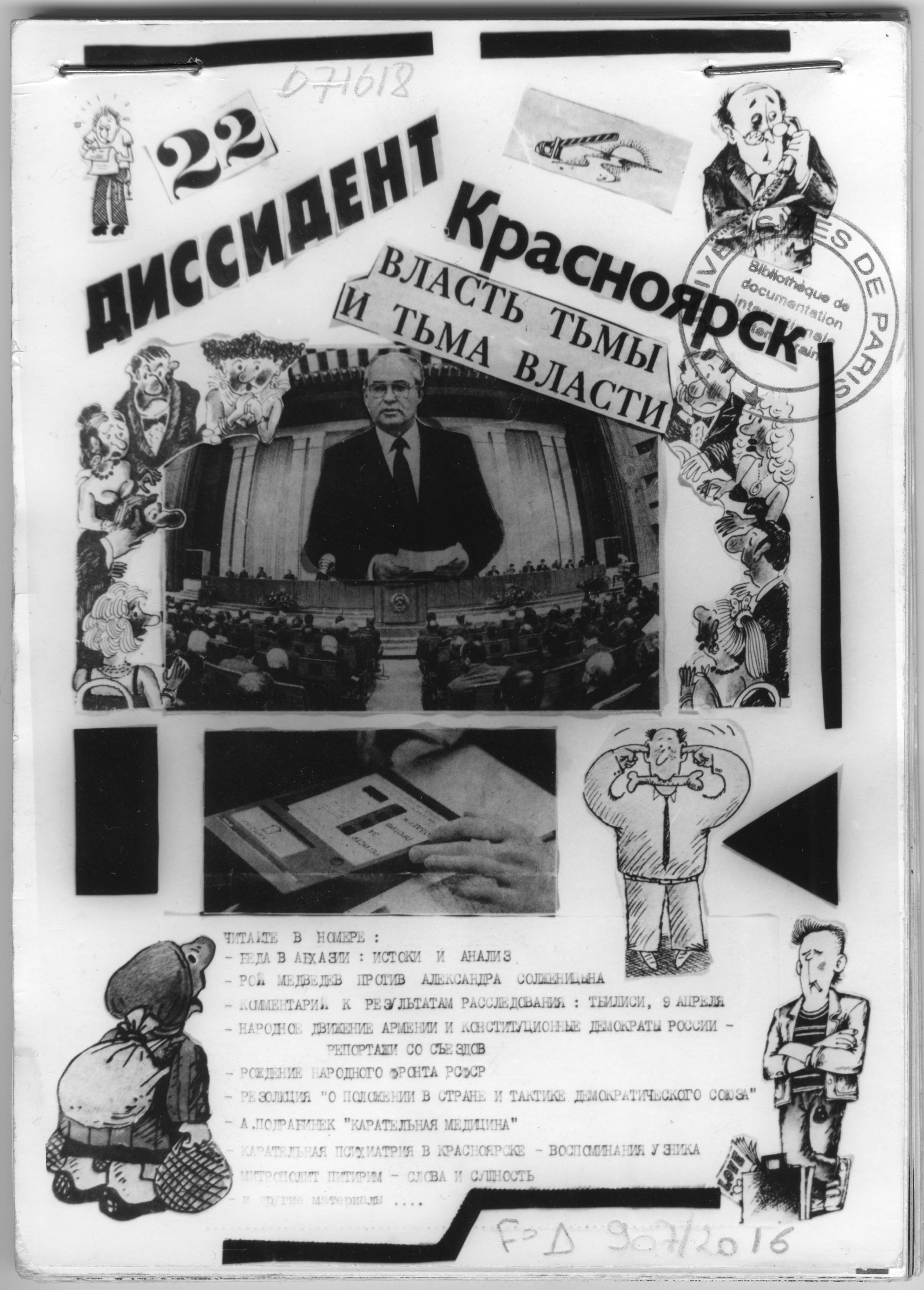
‘Dissident’ is a publication exemplary of the press metamorphosis in the USSR, with media adopting a new tone. Similarly a new, non-official, type of journalism appeared. Independent and free in both senses of the word, this press called itself ‘informal’ and inherited its traditional form from the tradition of samizdat or the underground press from the 1960s (Image: © collection BDIC)
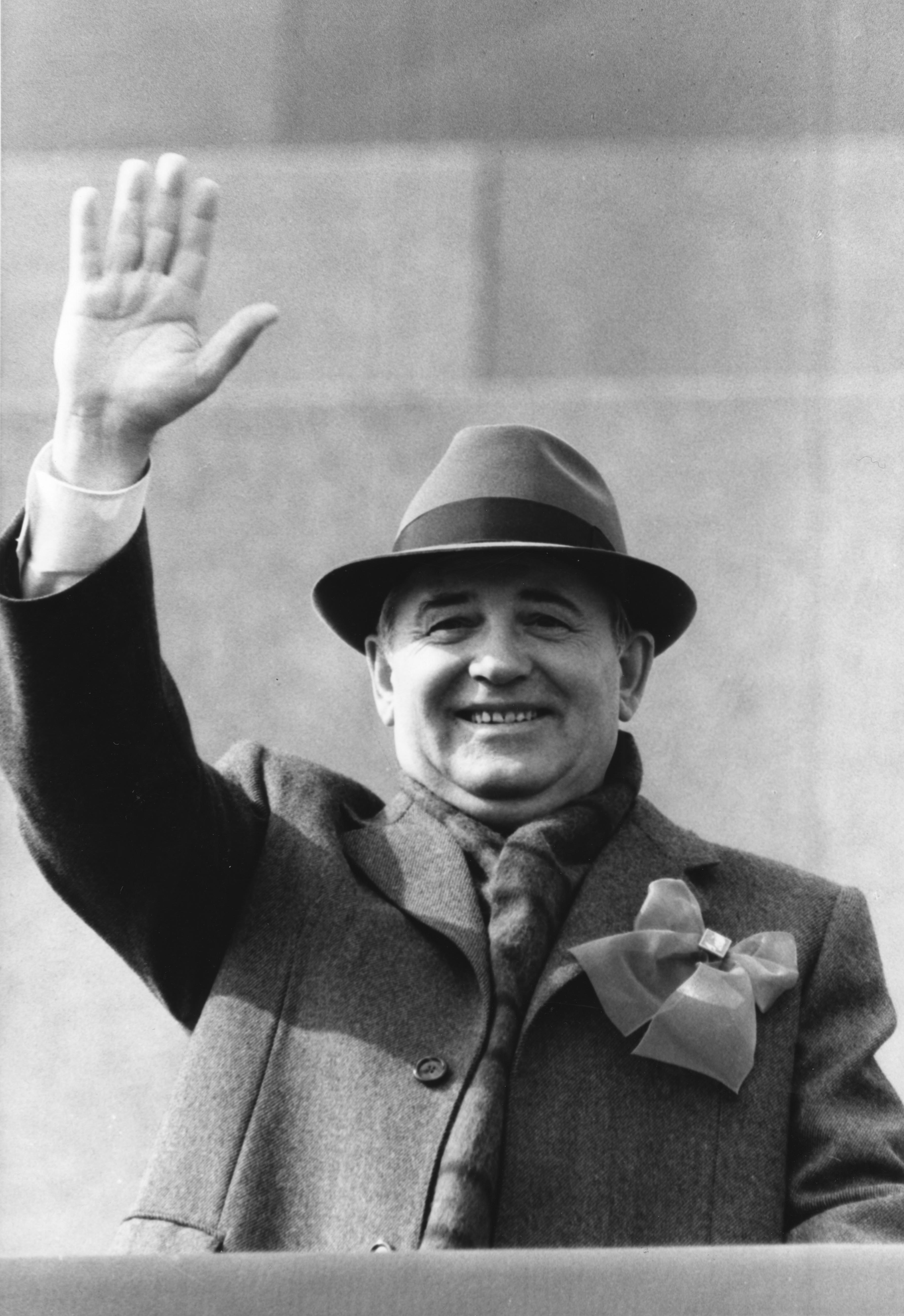
The last soviet president Michael Gorbatchev took power in 1985 for six years. His face embodies the perestroika of which the original aim was the modernisation of the USSR, in particular the battle against economical standstill and the development of the technology industry. He pays his respects at Lenin’s mausoleum on 1 May, traditionally celebrated as labour day (Image: © V. Musaelyan, 1988, collection BDIC, Fonds France-URSS © Tass)

‘Miss’ competition, Moscow, 1998 (Image: © collection BDIC, Fonds France-URSS Tass)
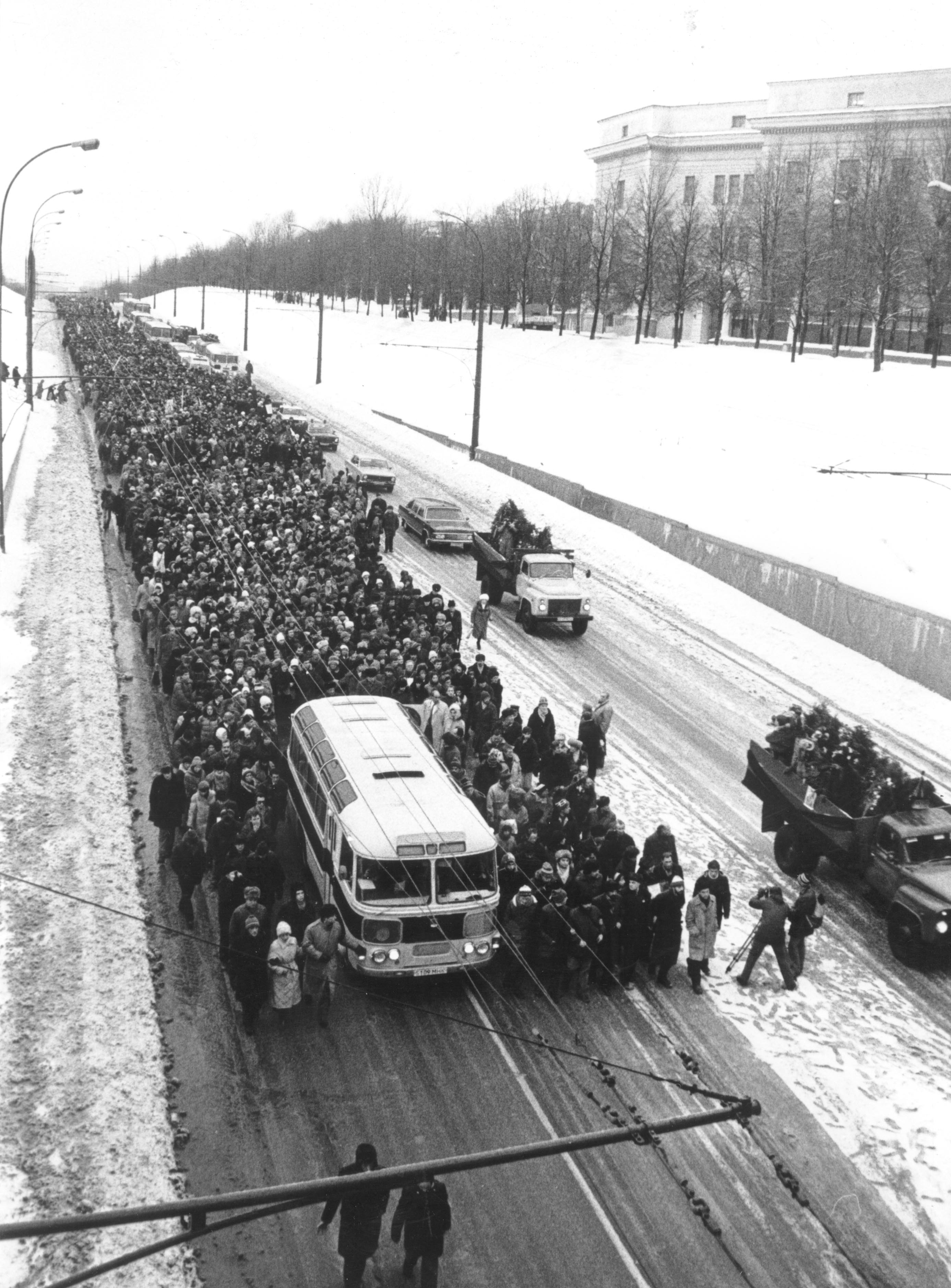
Mourners for Andrei Sakharov, Moscow, 18 December 1989. The nuclear physicist embodied the free spirit of glasnost. When he died aged 78 he left behind numerous battles for human rights in the USSR, the 1975 Nobel peace prize…and the H bomb (Image: © Vologodskïï, 1989, collection © Memorial)

From 2 to 17 October 1990, 30,000 students gathered for a hunger strike on Kiev’s Square of the October revolution (renamed as independence square after Ukraine’s independence in 1991) (Image: © V. Repik et V. Samokhotski, 1990, collection Ukrinform © Ukrinform)

Glasnost allowed television to open up with interviews and questions about the news, trials and debates. Here the programme 12th Level holds an intergenerational discussion on the role of (notably male) youth in society (Image: I. Zotine, 1988 collection BDIC, Fonds France-URSS © Tass)

The Public Opinion programme was the first in the USSR offering passers by the chance to express themselves without censorship first. The photo captures the programme’s huge success the day it discussed the soviet education system, with citizens expressing themselves critically to the journalists (Image: Iouri Belinski, 1987, collection BDIC, Fonds France-URSS © Tass)
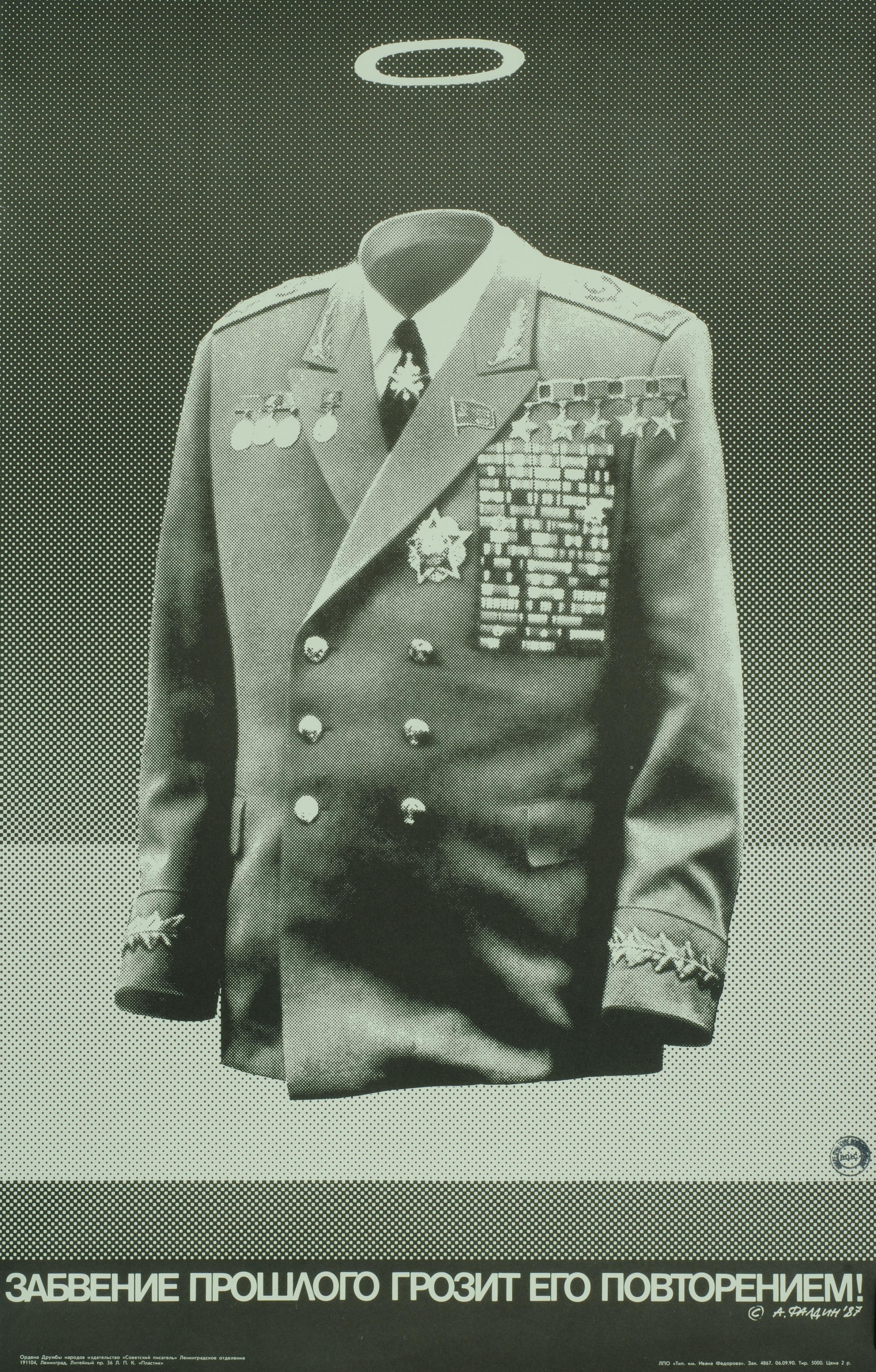
‘Forgetting the past is risking seeing it repeating itself’ (Poster A/ Faldine, 1990, Leningrad, Sovetskiï pisatel collection BDIC © A. Faldine)

The 14th communist party conference in June 1988 allowed the election of representatives to a new congress in May 1989. This was the first time in the USSR that the political system allowed the election to parliament of people not previously picked out (Image: Y. Lizounov and A. Choumichev, Moscou, 1988. collection BDIC, Fonds France-URSS © Tass)
Catch the 'URSS fin de partie' exhibition at the 'musée d’Histoire contemporaine de Paris' between 2 December and 26 February 2012
Translated from URSS fin de partie : les années Perestroïka en images



